Venezuela, officially the Bolivarian Republic of Venezuela, is a country located on the northern coast of South America. It includes a continental landmass and numerous islands in the Caribbean Sea. Its area spans 916,445 km2 (353,841 sq mi), with an estimated population of 29 million in 2022. Caracas is its capital and largest city. Venezuela is bordered by the Caribbean Sea and the Atlantic Ocean to the north, Colombia to the west, Brazil to the south, Trinidad and Tobago to the northeast, and Guyana to the east. The country is divided into 23 states, the Capital District, and federal dependencies comprised of offshore islands. Venezuela is highly urbanized, with most of its population residing in the northern cities and the capital.
1903: Resolution of the Venezuela Crisis
In 1903, the Venezuela Crisis was resolved through international arbitration at the new Permanent Court of Arbitration.
1908: Dispute with the Netherlands and Overthrow of Castro
In 1908, another dispute broke out with the Netherlands, which was resolved when Cipriano Castro left for medical treatment in Germany and was promptly overthrown by Juan Vicente Gómez.
1935: Highest GDP in Latin America
By 1935, Venezuela's per capita gross domestic product was the highest in Latin America, following the discovery of massive oil deposits.
1935: Death of Gómez
Gómez remained the most powerful man in Venezuela until his death in 1935.
1941: Reforms under Isaías Medina Angarita
From 1941, under Isaías Medina Angarita, a range of reforms were granted, including the legalization of all political parties.
1943: 50/50 profit split
In 1943, a new government in Venezuela introduced a 50/50 split in profits between the government and the oil industry.
1945: Civilian-Military Coup
In 1945, a civilian-military coup overthrew Medina Angarita, ushering in a period of democratic rule.
1945: Relaxation of Gomecista Dictatorship
The gomecista dictatorship system was relaxed from 1941 and continued under Eleazar López Contreras until 1945.
1947: Venezuelan Presidential Election
Rómulo Gallegos won the 1947 Venezuelan presidential election (the first free and fair elections in Venezuela).
1948: Military Coup d'état
In 1948, Rómulo Gallegos was overthrown by a military junta in the Venezuelan coup d'état.
1948: Military Junta Rule Begins
In 1948, a military junta began ruling Venezuela, lasting until 1958.
1950: Death of Chalbaud
In 1950, Chalbaud died in a bungled kidnapping.
1952: Jiménez Installed as President
When the junta unexpectedly lost the 1952 presidential election, it ignored the results, and Jiménez was installed as president.
1953: Name Change to República de Venezuela
In 1953, the official name of the country was changed back to República de Venezuela.
January 1958: Overthrow of Jiménez
On January 23, 1958, Jiménez was forced out of power.
1958: Transition to Democratic Governments
From 1958, Venezuela transitioned to a series of democratic governments, a unique period amidst military dictatorships in the region, characterized by economic prosperity.
1959: Betancourt's Second Term
During Rómulo Betancourt's second term (1959–64), substantial guerilla movements occurred.
1959: First Enabling Act Passed
Since 1959, six Venezuelan presidents have been granted the ability to rule by decree in specified policy areas via enabling acts passed by the National Assembly.
1960: Attack on Betancourt
In 1960, Betancourt suffered an attack planned by the Dominican dictator Rafael Trujillo.
1960: OPEC creation
In 1960, Hydrocarbons Minister Juan Pablo Pérez Alfonso led the creation of OPEC, a consortium of oil-producing countries aiming to support the price of oil.
1962: Failed Revolts
In 1962, the leftists excluded from the Pact initiated an insurgency by organizing themselves into the Armed Forces of National Liberation and tried to destabilize the military corps, with failed revolts.
1964: Leoni's Presidency
During Raúl Leoni's presidency (1964–69), substantial guerilla movements occurred.
1966: Geneva Agreement Signed
In 1966, the British and Venezuelan governments signed the Geneva Agreement to resolve the dispute over the territory of Guayana Esequiba peacefully.
1968: Caldera Wins Election
Caldera won the 1968 election for COPEI, the first time a party other than Democratic Action took the presidency through a democratic election.
1969: Administrative Regions Established
In 1969, Venezuela's states were grouped into nine administrative regions by presidential decree.
1969: Caldera's First Presidency
Most guerilla movements laid down their arms under Rafael Caldera's first presidency (1969–74).
1970: Port of Spain Protocol
In 1970, the Port of Spain Protocol set a deadline to try to resolve the Guayana Esequiba issue, without success to date.
1973: Vote to nationalize oil industry
In 1973, Venezuela voted to nationalize its oil industry.
1973: Carlos Andrés Pérez Election and Oil Crisis
The 1973 Venezuelan presidential election of Carlos Andrés Pérez coincided with an oil crisis, leading to increased income for Venezuela.
January 1976: Oil industry nationalization effective
On January 1, 1976, Venezuela's nationalization of its oil industry became effective, with Petróleos de Venezuela (PDVSA) taking over.
1976: Nationalization of Oil Industries
In 1976, oil industries were nationalized in Venezuela, following the oil crisis.
1982: Chávez promises to depose governments
In 1982, Hugo Chávez promised to depose the bipartisanship governments.
1983: Currency Devaluation
In 1983, the government started to devalue the currency to face its financial obligations, leading to a dramatic fall in living standards.
1983: Caracas Metro operational
The Caracas Metro has been operating since 1983.
1988: Re-election of Carlos Andrés Pérez
Carlos Andrés Pérez was re-elected in 1988.
1989: Caracazo Riots
In 1989, the Caracazo riots occurred during the second presidential term of Carlos Andrés Pérez after the implementation of economic austerity measures.
1990: Deforestation
In 1990, Venezuela experienced significant deforestation, losing roughly 8.3% of its forest cover by 2005. This is about 4.3 million hectares. Federal protections for critical habitat were implemented.
February 1992: Chávez's Coup Attempt
In February 1992, Hugo Chávez, justified by anger at economic austerity measures, led a coup attempt.
1992: Attempted Coups
In 1992, two attempted coups occurred in Venezuela, contributing to major political crises and widespread social unrest.
1993: Carlos Andrés Pérez presidential term
Carlos Andrés Pérez's (1989–1993) presidential term.
1993: Impeachment of Carlos Andrés Pérez
In 1993, President Carlos Andrés Pérez was impeached under embezzlement charges.
1993: Impeachment of a President
In 1993, the president of Venezuela was impeached for embezzlement of public funds, adding to the major political crises and social unrest.
March 1994: Pardon of Hugo Chávez
In March 1994, coup leader Hugo Chávez was pardoned by President Rafael Caldera, reinstating his political rights.
1994: Banking Crisis
The 1990s saw Venezuela experience a major banking crisis in 1994.
1995: Corruption Perceptions Index start
Since the start of the Corruption Perceptions Index in 1995, Venezuela has been ranked as one of the most corrupt countries.
1996: Inflation Peak
In 1996, Venezuela experienced inflation that peaked at 100%.
1997: Founding of Fifth Republic Movement
In 1997, Chávez founded the Fifth Republic Movement.
1998: Chávez Wins Presidential Election
In 1998, Chávez won the presidential election.
1998: Election of Hugo Chávez
In 1998, Hugo Chávez was elected president, leading to the launch of a "Bolivarian Revolution".
1999: Venezuelans Emigration
A 2014 study by sociologists of the Central University of Venezuela found over 1.5 million Venezuelans, or about 4% to 6% of the country's population, have left Venezuela since 1999.
1999: Adoption of New Constitution
Following the adoption of the new Constitution of 1999, Venezuela has been considered the Bolivarian Republic.
1999: Chávez Maintains Presidency
From 1999 until his death in 2013, Chávez maintained the presidency continuously.
1999: Constituent Assembly and New Constitution
In 1999, a Constituent Assembly was convened, leading to the imposition of a new Constitution of Venezuela and marking the beginning of the Bolivarian Revolution.
1999: Constituent Assembly
In 1999, a constituent assembly was formed to write a new Constitution, marking the beginning of the "Bolivarian Revolution".
1999: Name Change to República de Venezuela
In 1999, the official name of the country was changed to República de Venezuela.
1999: Chávez took office
The presidential election that took place in April 2013, was the first since Chávez took office in 1999 in which his name did not appear on the ballot.
September 2000: Millennium Development Goals agreement
In September 2000, Venezuela and 188 other nations agreed to the Millennium Development Goals.
2000: Chávez Wins Presidential Election
Chávez won the elections of 2000.
2001: Oil price recovery
The recovery of oil prices after 2001 boosted the Venezuelan economy and facilitated social spending.
2001: Limits on foreign investment
Under Hugo Chávez a 2001 law placed limits on foreign investment.
April 2002: Coup d'état Attempt
In April 2002, Chávez was briefly ousted from power in a coup d'état attempt but returned after two days.
December 2002: National Strike
In December 2002, an all-out national strike began, lasting until February 2003.
2002: Relations with the US Worsen
In 2002, relations between Venezuela and the United States government worsened after the 2002 Venezuelan coup d'état attempt during which the U.S. government recognized the short-lived interim presidency of Pedro Carmona.
February 2003: End of National Strike
In February 2003, the all-out national strike ended, which had begun in December 2002.
2003: Land Under Conservation Management
In 2003, 70% of Venezuela's land was under conservation management in over 200 protected areas, including 43 national parks, such as Canaima National Park, Morrocoy National Park, and Mochima National Park. There is also a reserve for the Yanomami tribes.
2003: Currency controls implemented
In 2003, the government of Hugo Chávez implemented currency controls after capital flight led to a devaluation of the currency, which resulted in a parallel dollar market developing in subsequent years.
August 2004: Recall Referendum
In August 2004, Chávez survived a recall referendum.
2004: Chávez Wins Presidential Referendum
Chávez won the presidential referendum of 2004.
2005: Deforestation
By 2005, Venezuela had officially lost 8.3% of its forest cover since 1990, which is about 4.3 million hectares.
December 2006: Election for Another Term
In December 2006, Chávez was elected for another term.
2006: Chávez Wins Presidential Election
Chávez won the elections of 2006.
2006: ONA incorporation
In 2006, Venezuela's government agency for combating illegal drug trade, ONA, was incorporated into the office of the vice-president.
2006: Manufacturing Contribution to GDP
In 2006, manufacturing contributed 17% of Venezuela's GDP.
2006: Democracy Index Rating
In 2006, the Economist Intelligence Unit rated Venezuela as an hybrid regime and the third least democratic regime in Latin America on the Democracy Index.
2007: Asylum Seekers
According to the World Refugee Survey 2008, published by the U.S. Committee for Refugees and Immigrants, Venezuela hosted a population of refugee and asylum seekers from Colombia numbering 252,200 in 2007 and 10,600 new asylum seekers entered Venezuela in 2007.
2007: Founding of United Socialist Party of Venezuela
In 2007, Chávez founded the United Socialist Party of Venezuela.
2008: Population Composition Study
According to an autosomal DNA study conducted in 2008 by the University of Brasília, the composition of Venezuela's population is 60.60% European, 23% Indigenous, and 16.30% African.
2008: World Refugee Survey 2008
According to the World Refugee Survey 2008, Venezuela hosted a population of refugee and asylum seekers from Colombia numbering 252,200 in 2007.
2008: Expansion of Armed Forces
As of 2008, a further 600,000 soldiers were incorporated into a new branch of the Bolivarian National Armed Forces, known as the Armed Reserve.
2008: Crime as a top concern
In 2008, polls indicated that crime was the number one concern of voters in Venezuela.
February 2009: Presidential Re-election Allowed
As of February 2009, an amendment to the constitution allowed the Venezuelan president to be re-elected an unlimited number of times.
December 2009: Shift in Division of Powers
In December 2009, Supreme Court president Luisa Estela Morales stated that Venezuela had moved away from a rigid division of powers towards a system characterized by intense coordination between the branches of government, clarifying that each power must be independent.
2009: Oil reserves
Venezuela had the largest oil reserves in the world in 2009.
2010: Crude oil reserves proven
Compared to 2009, another 40.4% in crude oil reserves were proven in 2010, allowing Venezuela to surpass Saudi Arabia as the country with the largest reserves of this type.
2010: Corruption Perceptions Index ranking
In 2010, Venezuela was ranked at number 164 out of 178 countries in government transparency according to the Corruption Perceptions Index.
November 2011: Gold repatriation
In November 2011, the first of US$11 billion of repatriated gold bullion arrived in Caracas as part of a "sovereign" step to protect the country's foreign reserves.
2011: National Assembly
For the 2011–2016 period the number of seats in the National Assembly is 165. All deputies serve five-year terms.
2011: Illegal Immigrants
In 2011, it was estimated that between 500,000 and one million illegal immigrants were living in Venezuela.
2011: Venezuelan Census
In the 2011 census in Venezuela, the majority of the population claimed to be moreno (dark-skinned) or white.
October 2012: Election for a Third Term
In October 2012, Chávez was elected for a third term.
2012: Chávez Wins Presidential Election
Chávez won the elections of 2012.
February 2013: Currency Devaluation
In February 2013, Venezuela devalued its currency due to rising shortages of essential goods, including milk, leading to increased malnutrition, especially among children.
March 2013: Death of Chávez
Chávez died in March 2013 due to medical complications and was never sworn in for his third term.
April 2013: Maduro Wins Presidential Election
In April 2013, Nicolás Maduro won the presidential election with 51% of the vote following Hugo Chávez's death, defeating Henrique Capriles. The Democratic Unity Roundtable contested the election results as fraudulent, but audits found no discrepancies, and the Supreme Court ruled Maduro the legitimate president.
2013: Chávez Death
From 1999 until his death in 2013, Chávez maintained the presidency continuously.
2013: Dollar reserves added
In 2013 the government was forced to add the dollar reserves of state owned companies to those of the national bank to reassure the international bond market.
2013: Maduro Appointed Vice President
In 2013, Nicolás Maduro was picked by Chavez as his successor, appointing him vice president.
2013: Bond ratings decrease
In 2013, Venezuela's bond ratings decreased multiple times due to decisions by President Nicolás Maduro.
2013: Currency devaluation and shortages
In early 2013, Venezuela devalued its currency due to growing shortages of necessities such as toilet paper, milk, and flour.
2013: Disputed Presidential Election
The 2013 Venezuelan presidential election was widely disputed leading to widespread protest, triggering another nationwide crisis.
February 2014: Widespread Protests Begin
In February 2014, Venezuela experienced the start of widespread protests, with hundreds of thousands demonstrating against criminal violence, corruption, hyperinflation, and shortages of basic goods, resulting in numerous fatalities and the arrest of opposition leaders.
2014: Venezuelans Emigration
A 2014 study by sociologists of the Central University of Venezuela found over 1.5 million Venezuelans, or about 4% to 6% of the country's population, have left Venezuela since 1999.
2014: Oil Price Plummet Impacts Economy
Beginning in 2014, Venezuela experienced a significant economic impact as the price of oil plummeted from over $100 to $40 per barrel, reducing the country's ability to fund its extensive social programs.
2014: Protests Begin
In 2014, a series of protest and demonstrations began in Venezuela, attributed to inflation, violence and shortages in Venezuela. The protests were largely peaceful.
2014: Rule of Law Index Ranking
In 2014, the World Justice Project ranked Venezuela 99th out of 99 countries surveyed in its Rule of Law Index.
December 2015: Judges Designated
On 6 December 2015, Maduro fraudulently designated judges. The day after the election Maduro effectively controls all three branches of government.
December 2015: Parliamentary Elections Held
On 6 December 2015, parliamentary elections were held to elect the 164 deputies and three Indigenous representatives of the National Assembly.
2015: Homicide rate increase
By 2015, the homicide rate in Venezuela had risen to 90 per 100,000 residents.
2015: Highest Inflation Rate in the World
In 2015, Venezuela experienced the world's highest inflation rate, surpassing 100%, exacerbating the country's economic challenges.
2015: Declared a National Security Threat
In 2015, Venezuela was declared a national security threat by U.S. president Barack Obama. Ties to various Latin American and Middle Eastern countries not allied to the U.S. have strengthened.
2015: Opposition Gains Majority in Parliamentary Election
In 2015, the opposition gained a majority in the Venezuelan parliamentary election amidst ongoing unrest and economic challenges.
January 2016: Economic Emergency Declared
In January 2016, President Maduro decreed an "economic emergency" in Venezuela, revealing the extent of the economic crisis and expanding his executive powers.
April 2016: Power shortages and government response
In April 2016, to deal with a lack of power supply, the Maduro government in Venezuela announced rolling blackouts and reduced the government workweek to only Monday and Tuesday.
May 2016: Constitutional Guarantees Suspended
On 14 May 2016, constitutional guarantees were suspended when Maduro decreed the extension of the economic emergency decree for another 60 days and declared a State of Emergency, which is a clear violation of the Constitution of Venezuela.
May 2016: OAS Considers Sanctions
On 14 May 2016, the Organization of American States was considering the application of the Inter-American Democratic Charter sanctions for non-compliance to its own constitution.
July 2016: Colombian Border Temporarily Opened
In July 2016, the Colombian border crossings were temporarily opened to allow Venezuelans to purchase food and basic health items due to severe shortages within Venezuela.
September 2016: Study Reveals Widespread Food Waste Consumption
In September 2016, a study indicated that 15% of Venezuelans were resorting to eating "food waste discarded by commercial establishments" due to severe food shortages.
October 2016: Increase in Prison Riots
By October 2016, Venezuela had experienced 200 prison riots, reflecting the instability and crisis within the country.
2016: Corruption Perceptions Index ranking
By 2016, Venezuela's rank in the Corruption Perceptions Index had increased to 166 out of 178 countries.
2016: National Assembly
For the 2011–2016 period the number of seats in the National Assembly is 165. All deputies serve five-year terms.
2016: Per Capita GDP
In 2016, Venezuela's per capita GDP was estimated to be US$15,100, ranking 109th in the world.
2016: Economic decline and price increase
In 2016, consumer prices in Venezuela increased by 800% and the economy declined by 18.6%, which led to an economic depression.
March 2017: Gasoline Shortages
In March 2017, Venezuela began experiencing shortages of gasoline in some regions.
March 2017: Supreme Court Actions
In March 2017, the Venezuelan Supreme Court initially took over law making powers from the National Assembly but reversed its decision the following day.
April 2017: Withdrawal from the OAS Announced
On 26 April 2017, Venezuela announced its intention to withdraw from the OAS, with plans to formally renounce membership on 27 April 2017, taking two years to formally leave. During this period, the country does not plan on participating in the OAS.
August 2017: Constituent National Assembly Elected
In August 2017, the 2017 Constituent National Assembly was elected in Venezuela and subsequently stripped the National Assembly of its powers, raising concerns about the rise of a dictatorship.
December 2017: Opposition Parties Barred from Presidential Vote
In December 2017, President Maduro declared that opposition parties would be barred from participating in the following year's presidential vote after they boycotted mayoral polls.
2017: Default on Debt Payments
By 2017, Venezuela was declared to be in default regarding debt payments by credit rating agencies.
2017: Human Rights Criticism
In 2017, Human Rights Watch noted that the Chavez and Maduro governments increasingly concentrated power in the executive branch, eroded constitutional human rights protections, and persecuted critics and opposition.
2017: Negative economic outlook
In 2017, Venezuela's economic outlook was deemed negative by most bond-rating services.
2017: Downgraded to Authoritarian Regime
In 2017, the Democracy Index downgraded Venezuela to an authoritarian regime, citing increasingly dictatorial behaviors by the Maduro government.
2017: Arms diversion to paramilitary groups
In 2017, the Financial Times noted that some of the arms procured by the government over the previous two decades had been diverted to paramilitary civilian groups and criminal syndicates.
2017: US Imposes Economic Sanctions
In 2017, the Trump administration imposed more economic sanctions against PDVSA and Venezuelan officials, further impacting the Venezuelan economy.
2018: Projected inflation rate
For 2018, an inflation rate of 1,000,000 percent was projected for Venezuela, putting the country in a situation comparable to Germany in 1923 or Zimbabwe in the late 2000s.
2018: Maduro Wins Disputed Election
In 2018, Nicolás Maduro won the presidential election in Venezuela with 68% of the vote, although the result was widely challenged as fraudulent by numerous countries, including Argentina, Chile, Colombia, Brazil, Canada, Germany, France, and the US, which recognized Juan Guaidó as president.
2018: Enforced Disappearances
In June 2020, a report documented enforced disappearances that occurred in Venezuela during 2018–19, reporting 724 cases of political detainees subjected to torture, used by the government to silence opponents.
August 2019: US Imposes Economic Embargo
In August 2019, the Trump administration imposed an economic embargo against Venezuela, escalating economic pressures on the country.
March 2020: Trump Indicts Maduro and Officials
In March 2020, the Trump administration indicted Nicolás Maduro and other Venezuelan officials on charges of drug trafficking, narcoterrorism, and corruption.
June 2020: Report on Enforced Disappearances
In June 2020, a report documented enforced disappearances that occurred in Venezuela during 2018–19, reporting 724 cases of political detainees subjected to torture, used by the government to silence opponents.
2021: Population of Venezuela
According to the 2022 revision of the World Population Prospects the total population of Venezuela was 28,199,867 in 2021.
2021: Reliance on hydroelectricity
In 2021, the electricity sector in Venezuela was heavily dependent on hydroelectricity, accounting for 64% of the country's electricity generation.
2022: Revision of the World Population Prospects
According to the 2022 revision of the World Population Prospects the total population was 28,199,867 in 2021.
2022: Reliance on Remittances
As of 2022, at least 5% of Venezuela's economy relied on remittances.
2022: Population Estimate
In 2022, Venezuela's population was estimated to be 29 million.
February 2024: UN Special Rapporteur Visit
In February 2024, a UN special rapporteur visited Venezuela.
2024: Economic decline
As of 2024, Venezuela's GDP had fallen by 80 percent in less than a decade, leading to mass emigration and severe shortages of basic necessities and failing health and education systems.
2024: Maduro Runs for Third Term Amidst Skepticism
In 2024, Nicolás Maduro ran for a third consecutive term in the presidential election against Edmundo González Urrutia, who represented the opposition. After the government-controlled National Electoral Council announced a narrow Maduro victory, world leaders predominantly expressed skepticism and did not recognize the claims.
2024: Rated as Electoral Autocracy
In 2024, the Regimes of the World index rated Venezuela as an electoral autocracy, reflecting concerns about its democratic processes.
May 2025: Venezuelan Refugee Crisis
By May 2025, the Venezuelan refugee crisis had resulted in more than 7.9 million people fleeing the country.
Mentioned in this timeline

Basketball is a team sport played on a rectangular court...
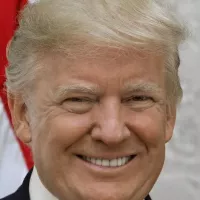
Donald John Trump is an American politician media personality and...
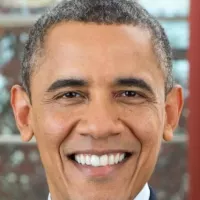
Barack Obama the th U S President - was the...
Saudi Arabia officially the Kingdom of Saudi Arabia KSA is...
Colombia officially the Republic of Colombia is a country located...

The world population the total number of living humans surpassed...
Trending
7 days ago Lucas Paqueta Faces Turmoil: FA Probe and Liverpool Red Card Impact West Ham

Brett Rypien is an American professional football quarterback for the Minnesota Vikings He played college football at Boise State before...

2 months ago Luis Suárez shines as Sporting faces Napoli amid fan clashes in Champions League.
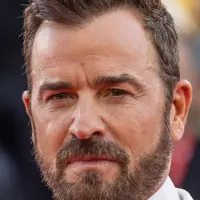
9 months ago Aniston and Pascal spark dating rumors after dinner, while Theroux reportedly weds.
6 months ago Dodgers Defeat Padres: Smith's Walk-Off Homer Secures Victory in Historic Game
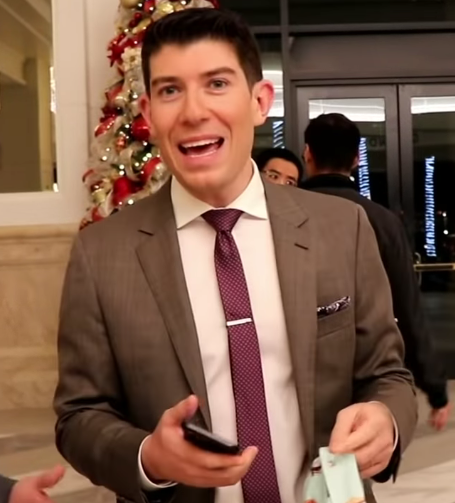
Jeff Passan is a prominent American baseball sportswriter and author He is known for his in-depth reporting analysis and commentary...
Popular
Matt and Ross Duffer known as the Duffer Brothers are...

Candace Owens is an American conservative political commentator and author...

Ilhan Omar is an American politician currently serving as the...

XXXTentacion born Jahseh Dwayne Ricardo Onfroy was a controversial yet...
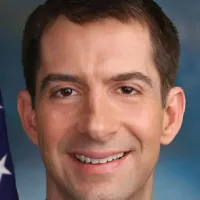
Tom Cotton is an American politician and Army veteran currently...
Aftyn Alyssa Behn is an American politician currently serving as...